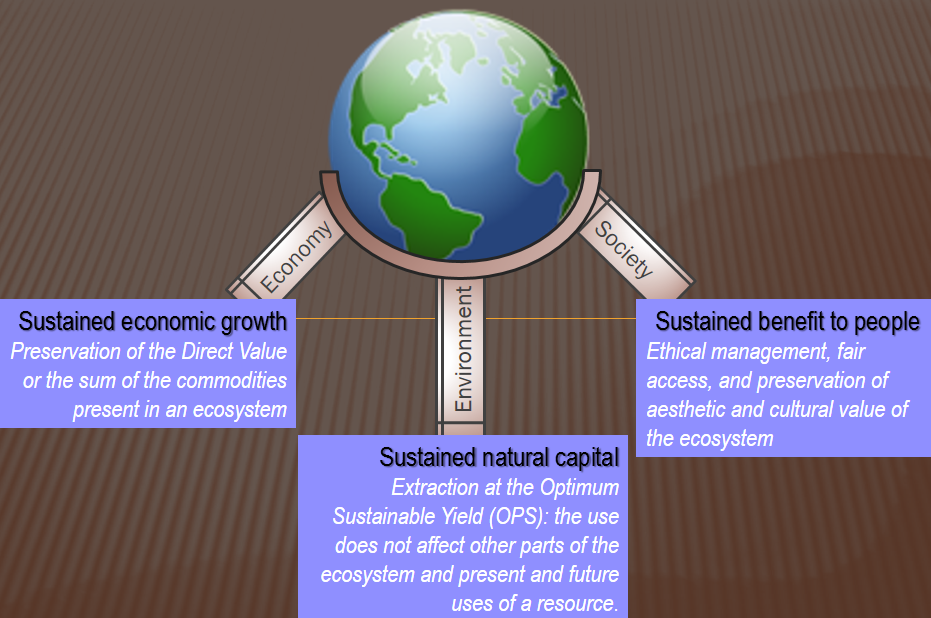The environment does not exist as a sphere separate from human actions, ambitions, and needs, and attempts to defend it in isolation from human concerns have given the very word "environment" a connotation of naivety in some political circles. The word "development" has also been narrowed by some into a very limited focus, along the lines of "what poor nations should do to become richer", and thus again is automatically dismissed by many in the international arena as being a concern of specialists, of those involved in questions of "development assistance".Gro Harlem Brundtland
Oslo, 20 March 1987
Our Common Future
Achieving the goals of Sustainability requires a balance among three different bottom lines (shown in Figure 1.4), which are linked in very intricate ways. For example, the Great Recession of 2008 resulted in a temporary decrease of carbon emissions. However, tentative improvements in the economy have been accompanied by proportionally larger increments in emissions. Stricter regulations on the mining industry in the developed world resulted in mass migration of extractive industries to the developing world, with a net increment in environmental degradation and larger losses of environmental resources.

The Environmental Bottom Line limits the extraction and harvesting to levels at or below the Optimal Sustainable Yield and it addresses critical environmental concerns:
- Emissions. Minimize emission from fossil fuels and the impact of these emissions on global climate.
- Resources. Reverse the loss of environmental resources.
- Biodiversity. Decrease the rate of decline of biodiversity.
The Social Bottom Line addresses the ethical management of resources, issues of social stability, and the preservation of aesthetic and cultural values. Social stability requires universal access to:
- Food. Feeding the world's population, which is projected to reach over 9 billion by 2050, requires a large increment of agricultural output. This is particularly important in the developing world, where production is limited and most of the population growth is predicted to occur. However, modern agricultural methods require vast losses of wild lands, drastic changes in ecosystems, and the introduction of large amounts of fertilizer and pesticides.
- Safe drinking water and basic sanitation. Access to water that is microbially, chemically and physically safe for human and animal consumption, sanitation and hygiene remains a challenge in the developing world. In addition, depletion and pollution of surface and ground waters are an increasing concern in many developed nations, including the United States.
The Economic Bottom Line aims at preserving the Direct Value of commodities present in an ecosystem. Sustainable economies are focused on curving poverty and incentivizing fair trade.
